Hey, if you’re knee-deep in DevOps-juggling pipelines, chasing down flaky tests, or just trying to keep the whole stack from imploding-you know the drill. It’s rewarding, sure, but man, it can feel like herding cats sometimes. That’s where AI steps in, not as some flashy gimmick, but as that quiet sidekick that spots issues before they blow up, automates the grunt work, and lets you actually focus on building stuff that matters. In 2025, the top companies in this space are cranking out tools that make CI/CD smoother, security tighter, and deployments way less stressful. I’ve rounded up a handful of standouts based on what teams are actually raving about right now. No fluff, just the goods to help you pick what fits your chaos. Let’s dive in.

1. AppFirst
AppFirst was built to let developers describe what an app requires, such as compute power or a database type, and it handles provisioning the full infrastructure setup across clouds. Everything from networking and secrets to logging and alerts comes pre-configured with best practices built in, ensuring changes are audited centrally without extra steps. Switching providers involves keeping the same app specification while AppFirst adjusts the underlying resources to fit the new environment’s norms. It is all about keeping the focus on the product, not the plumbing underneath.
Deployment options include managed SaaS for quick starts or self-hosting for compliance needs. There is no need to work with YAML or Terraform; AppFirst abstracts those layers so anyone can spin up compliant stacks. Observers often note how this eliminates lengthy PR reviews for infrastructure tweaks, freeing up time for actual feature work. Self-hosting suits environments requiring in-house control, while SaaS manages the operational side.
Faits marquants
- Provisions compute like Fargate alongside databases such as RDS
- Includes messaging options from SQS to RabbitMQ with IAM and secrets
- Built-in monitoring and alerting for end-to-end visibility
- Supports AWS, Azure, and GCP with abstracted tooling
Who it’s best for
- Developers skipping infra code for app focus
- Organizations enforcing standards without custom builds
- Groups ditching platform engineering for speed
Informations sur le contact
- Site web : www.appfirst.dev

2. GitLab Duo
GitLab Duo integrates AI features into the development environment to support coding and collaboration. Developers interact with conversational AI for guidance on tasks, while code suggestions appear directly in the IDE to assist with writing. The platform combines these elements with broader tools for managing pipelines and security checks, allowing workflows to flow from initial commits through to deployment without switching contexts. Scans for vulnerabilities happen automatically as part of the process, and everything ties back to a central view for tracking changes.
Recognition from industry reports highlights its position among AI code assistants, based on capabilities in streamlining secure software delivery. Users report quicker debugging cycles thanks to built-in analytics that pinpoint issues early. The setup emphasizes unified handling of CI/CD, so adjustments in one area reflect across the board without manual tweaks. It’s designed for environments where multiple contributors need visibility into how AI aids daily routines, keeping the focus on iterative improvements rather than tool juggling.
Faits marquants
- AI chat provides contextual help within the IDE for faster problem-solving
- Code suggestions focus on secure practices during writing
- Automated security scans embed into pipelines for ongoing checks
- Unified platform covers planning, building, and monitoring stages
Who it’s best for
- Groups handling full software lifecycles in one place
- Contributors seeking integrated AI without extra plugins
- Operations needing automated compliance in deployments
Informations sur le contact
- Website: gitlab.com
- LinkedIn : www.linkedin.com/company/gitlab-com
- Facebook : www.facebook.com/gitlab
- Twitter : x.com/gitlab

3. Digital.ai
Digital.ai links planning, testing, and security through AI insights across the software lifecycle. Analytics pull from various stages to offer visibility into delivery patterns, while agile tools scale practices from small groups to larger coordination efforts. Security measures detect threats in applications and automate responses, integrating with testing for broader coverage. Release processes orchestrate across environments, from traditional setups to cloud-based ones, with automation handling the handoffs.
The platform connects third-party systems for extended reach, gathering data on performance without custom scripts. Insights help align development with broader goals, spotting bottlenecks in value streams. Deployment tools manage scalability for different infrastructures, ensuring consistency in how changes roll out. It’s built around harmonizing elements that often fragment, providing a thread through complex setups.
Faits marquants
- Analytics align delivery with strategy via AI-driven views
- Agile planning scales insights from team to organizational levels
- Security automates threat responses and app visibility
- Testing covers web and mobile with increased coverage options
Who it’s best for
- Enterprises coordinating across hybrid environments
- Planners needing end-to-end visibility in releases
- Security-focused workflows requiring automated protections
Informations sur le contact
- Website: digital.ai
- Address: 555 Fayetteville St. Raleigh, NC 27601
- LinkedIn: www.linkedin.com/company/digitaldotai/
- Facebook: www.facebook.com/digitaldotai/
- Twitter: x.com/digitaldotai

4. Harness
Harness applies AI agents to stages after coding, targeting automation in delivery and monitoring. DevOps features understand existing setups to handle pipelines and infrastructure provisioning, while testing uses predictive methods to flag potential failures. Security scans for risks in builds and runtime, with compliance workflows built around contextual data. Cost tools suggest optimizations based on usage patterns, tying into frameworks for performance tracking.
Integrations span modules that fit into current stacks, reducing the need for scripting. Customer stories point to gains in deployment speed and governance through policy enforcement in pipelines. Reliability aspects focus on resilience, automating responses to outages. The approach centers on agentic automation, where AI handles routine decisions to free up focus for strategic adjustments.
Faits marquants
- AI agents automate CI/CD and infrastructure paths
- Predictive testing analyzes changes for resilience
- Security detects threats from build to deployment
- Optimization recommendations cut costs via usage insights
Who it’s best for
- Delivery teams scaling with growing code volumes
- Resilience efforts in multi-cloud setups
- Compliance needs with automated risk mitigation
Informations sur le contact
- Website: www.harness.io
- Address: 55 Stockton Street, Floor 8, San Francisco CA 94108
- LinkedIn: www.linkedin.com/company/harnessinc
- Facebook: www.facebook.com/harnessinc
- Twitter: x.com/harnessio
- Instagram: www.instagram.com/harness.io
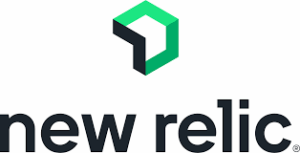
5. New Relic AI
Full-stack observability pulls together metrics, events, logs, and traces into one data layer, where AI steps in to sift through it all. Developers poke around error logs or stack traces right in their IDE, getting plain-language breakdowns that cut straight to the code line causing trouble. DevOps folks pull reports on how recent changes ripple through the system, spotting shifts in health before they snowball. It’s all tied to predictive models that learn from the environment, flagging anomalies across services without drowning in alerts.
Recent updates layer in retrieval-augmented generation for deeper context, plus integrations with tools like GitHub Copilot for automated issue spotting and code fixes. Queues and streams get bi-directional visibility, linking producers and consumers so pinpointing bottlenecks in message flows happens without flipping between dashboards. Agentic setups partner with platforms for proactive workflows, handling everything from cloud cost tweaks to incident correlation. The focus stays on turning raw telemetry into quick, actionable views that keep things running smooth amid growing complexity.
Faits marquants
- Plain-language queries analyze data across languages for easy insights
- Anomaly detection learns patterns to cut alert noise
- Transaction views correlate changes and alerts for faster troubleshooting
- AI monitoring tracks GenAI apps like LLMs for performance and uptime
Who it’s best for
- Engineers debugging distributed systems with heavy telemetry
- Groups integrating observability into development tools
- Operations handling cloud costs and incident response
Informations sur le contact
- Site web : newrelic.com
- Phone: (415) 660-9701
- Address: 1100 Peachtree St NE, Atlanta, GA 30309
- LinkedIn : www.linkedin.com/company/new-relic-inc-
- Facebook : www.facebook.com/NewRelic
- Twitter : x.com/newrelic
- Instagram : www.instagram.com/newrelic

6. mabl
Agentic AI handles the grunt of test creation, running them through web, mobile, API, and even accessibility checks without constant tweaks. QA engineers lean on it as a co-pilot for spotting flaky spots in execution or maintenance, while developers get feedback looped straight into their IDE or CLI for on-the-fly adjustments. Semantic search digs into the test library for reuse, and auto-triage feeds failure details into tickets, keeping the loop tight. Built on years of layering AI into the full testing cycle, it adapts to app changes on its own.
Enhancements to the creation agent add conversational planning, pulling context from integrations like Jira or third-party setups to churn out consistent tests quicker. The MCP server acts as a data hub, feeding richer info for complex workflows across environments. Email and PDF validation slots into end-to-end journeys, checking registrations or document accuracy alongside UI flows. Pricing starts with a free trial for hands-on exploration, then shifts to paid plans that bundle all capabilities with unlimited local runs and cloud concurrency, scaled to fit testing volume without extra fees for sharing across apps.
Faits marquants
- Auto-healing adjusts tests to UI shifts automatically
- Semantic search reuses tests with full context awareness
- Triage agent pushes failure insights to tools like Jira
- Unified coverage for web, mobile, API, and performance
Who it’s best for
- QA workflows bogged down by repetitive maintenance
- Developers needing quick feedback in code environments
- Leaders scaling tests across multiple app types
Informations sur le contact
- Website: www.mabl.com
- LinkedIn: www.linkedin.com/company/mabl
- Facebook: www.facebook.com/mabl.inc
- Twitter: x.com/mablhq
- Instagram: www.instagram.com/mablhq

7. CircleCI
Chunk acts as an autonomous agent in the CI/CD pipeline, zeroing in on validation for code spat out by AI tools. It sniffs out flaky tests, repairs builds overnight, and tweaks configs to match the pace of rapid changes, all while keeping human oversight light. Workflows span from prompt tweaks to merges and deploys, with rollback paths baked in for quick reversals on failures. The platform stretches across languages and setups, from Docker containers to GPU-heavy AI workloads, orchestrating without much manual prodding.
Newer bits like the MCP server hook AI assistants into logs and metadata for sharper diagnostics, while intelligent selection picks relevant tests based on changes. Autonomous fixes target tech debt that piles up, like optimizing parallelism or caching, so pipelines hum along even as code volume spikes. A free tier lets users dip in for basic builds, but paid options unlock the full agentic features, autoscaling, and premium support tailored to heavier loads. It’s geared toward keeping validation in step with AI-driven development, catching hallucinations or rule breaks early.
Faits marquants
- Autonomous agent fixes flaky tests and builds 24/7
- Change detection selects tests for AI-generated code
- Rollback pipelines revert failed releases safely
- GPU support handles large-scale AI evaluation runs
Who it’s best for
- Teams validating fast AI code outputs without slowdowns
- Pipelines juggling diverse apps and infrastructures
- Engineers cutting toil on maintenance and optimizations
Informations sur le contact
- Website: circleci.com
- LinkedIn: www.linkedin.com/company/circleci
- Twitter: x.com/circleci
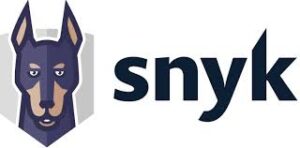
8. Snyk AI
Snyk weaves AI into security checks across code, dependencies, containers, and cloud configs, catching issues early without grinding workflows to a halt. DeepCode AI models dig into patterns trained on curated data, surfacing fixes that developers can apply straight from scans. Agentic workflows handle remediation for static analysis or open-source risks, while runtime testing pokes at APIs and web apps to expose gaps that static tools miss. The whole setup plugs into existing pipelines, feeding prioritized findings back to IDEs or ticket systems so nothing slips through unnoticed.
Evo adds orchestration for AI-native apps, coordinating security across scattered tools and environments. Inline advice for IaC keeps misconfigs from landing in production, and the vulnerability database stays fresh with ongoing research. Compliance mappings for standards like PCI or SOC come built-in, easing audit prep. A free account kicks things off with basic scanning, but paid tiers unlock agentic fixes, broader coverage, and dedicated support channels tailored to usage scale.
Faits marquants
- DeepCode AI prioritizes fixes using security-trained models
- Agentic remediation applies patches across SAST and SCA
- Runtime DAST scans APIs and web apps in production
- IaC checks flag misconfigs with inline repair guidance
Who it’s best for
- Developers embedding security into daily code pushes
- Security leads managing open-source and container risks
- Compliance-focused setups needing built-in policy mapping
Informations sur le contact
- Site web : snyk.io
- Address: Suite 4, 7th Floor, 50 Broadway London United Kingdom
- LinkedIn : www.linkedin.com/company/snyk
- Twitter : x.com/snyksec
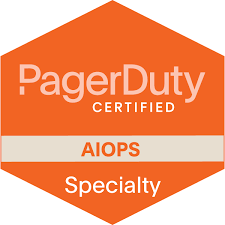
9. PagerDuty AIOps
PagerDuty layers AI over incident handling to cut through alert storms and speed up resolution. Noise reduction separates real problems from chatter, while automation scripts kick off responses at machine pace. End-to-end workflows track issues from detection through post-mortem, bridging gaps between support and engineering. Generative AI drafts status updates or scales runbooks, freeing up focus for actual firefighting.
Integrations pull in data from hundreds of sources, letting actions flow without manual hops. Event orchestration ties alerts to business impact, and predictive insights flag potential outages before they hit. Free trials open access to core incident management, with paid plans adding AIOps, advanced automation, and priority support scaled to incident volume.
Faits marquants
- AI filters alerts to highlight critical signals
- Automation runs responses without human delay
- Generative AI handles updates and runbook scaling
- Event rules link incidents to service impact
Who it’s best for
- Ops crews drowning in on-call noise
- Support bridging to engineering during outages
- Leaders pushing automation into incident flows
Informations sur le contact
- Site web : www.pagerduty.com
- Téléphone : 1-650-989-2965 1-650-989-2965
- Email: sales@pagerduty.com
- LinkedIn : www.linkedin.com/company/pagerduty
- Facebook : www.facebook.com/PagerDuty
- Twitter : x.com/pagerduty
- Instagram : www.instagram.com/pagerduty

10. VMware
Tanzu CloudHealth crunches multi-cloud spend data with AI to surface savings and enforce policies. Intelligent Assist parses usage patterns for tailored rightsizing tips, while governance rules automate actions like shutting idle resources. Custom dashboards let finance or ops slice costs by business unit, and forecasts predict bills based on trends. GreenOps tracks carbon footprints alongside dollars, nudging toward sustainable picks.
Asset Explorer maps resources to owners for accountability, and chargeback reports allocate costs cleanly. Budget alerts ping when thresholds near, preventing surprises. The platform starts with a demo, then paid access unlocks full FinOps tooling, multi-cloud optimization, and deeper automation tied to organizational structure.
Faits marquants
- Intelligent Assist recommends resource tweaks
- Policy automation enforces spending guardrails
- Chargeback allocates costs to business groups
- GreenOps measures environmental impact of cloud use
Who it’s best for
- Finance tracking cloud bills across providers
- Ops optimizing resource waste in hybrid setups
- Sustainability leads tying spend to carbon output
Informations sur le contact
- Site web : www.vmware.com
- LinkedIn : www.linkedin.com/company/vmware
- Facebook : www.facebook.com/vmware
- Twitter : x.com/VMware

11. Dynatrace
Dynatrace pulls metrics, logs, traces, and events into a single lakehouse called Grail, where AI contextualizes everything for quicker digs into issues. Davis AI predicts outages and kicks off fixes autonomously, while the automation engine handles repetitive tasks like scaling or alerting tweaks. Coverage spans GenAI apps, infrastructure, security threats, and even business metrics, all feeding into real-time dashboards that link code changes to user impacts. Pricing keeps it straightforward with a subscription model tied to cloud usage, and a free trial runs for fifteen days to test the full platform.
Extensions hook into clouds like AWS or Azure, plus tools such as OpenTelemetry, so existing setups blend in without big lifts. Log analytics turns raw data into searchable patterns for troubleshooting, and digital experience monitoring replays sessions to spot frontend glitches. Security scans prioritize vulnerabilities in runtime, blending observability with protection. Folks often note how the AI cuts through noise, making it easier to chase root causes instead of symptoms across sprawling stacks.
Faits marquants
- Grail lakehouse unifies telemetry for contextual queries
- Davis AI predicts issues and triggers autonomous responses
- Automation engine scripts workflows from insights
- Covers GenAI, infra, security, and business analytics
Who it’s best for
- Engineers tracing issues across hybrid clouds
- Ops correlating app performance to business outcomes
- Security scanning runtime threats in real time
Informations sur le contact
- Site web : www.dynatrace.com
- Phone: +1.650.436.6700
- Email: sales@dynatrace.com
- Address: 401 Castro Street, Second Floor Mountain View, CA, 94041
- LinkedIn : www.linkedin.com/company/dynatrace
- Facebook : www.facebook.com/Dynatrace
- Twitter : x.com/Dynatrace
- Instagram : www.instagram.com/dynatrace
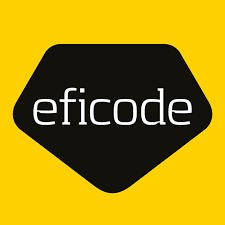
12. Eficode
Eficode guides shifts toward AI-integrated software practices through a framework with phases from basic assistants to full software factories. Consulting covers training, license handling, and ongoing services to weave AI into development without dropping quality or speed. DevOps acts as a backbone here, automating CI/CD to handle the flood of AI-generated code while enforcing tests and security. Workshops map AI opportunities to current processes, spotting quick wins in modernization.
The approach stresses governance early, ensuring compliance as agents take on workflows. Air France-KLM’s story shows cloud migrations cutting costs via streamlined tools. It’s hands-on, blending strategy with implementation so changes stick. Observers point out how it bridges the gap between hype and practical rollout, keeping cultural shifts in check.
Faits marquants
- Framework outlines phases to AI-native development
- Services include training and CI/CD optimization
- Focuses on governance for agent workflows
- Maps AI use cases to existing processes
Who it’s best for
- Organizations ramping AI in code pipelines
- Leaders balancing speed with compliance
- Groups modernizing via cloud and DevOps
Informations sur le contact
- Site web : www.eficode.com
- Phone: +1 215 510 4201
- Email: info@eficode.com
- Address: 2401 Walnut Street Suite 102 Philadelphia
- LinkedIn : www.linkedin.com/company/eficode
- Facebook : www.facebook.com/eficode
- Twitter: x.com/eficode
- Instagram : www.instagram.com/eficode

13. XenonStack
XenonStack builds agentic systems where AI handles DevOps stages like IaC generation, incident response, and pipeline tweaks via autonomous agents. Tools like Nyra turn questions into analytics, Iris spots patterns, and Vera forecasts scenarios, all embedded in workflows. Security weaves in trust scores for models and data, while red teaming simulates attacks on agents. IaC gets a boost from LLMs that spit out scripts from diagrams, cutting manual config errors.
The platform spans analytics, automation, and physical AI for factories, with bootcamps to train on infusing agents into ops. Challenges like data quality or bias get addressed head-on in adoption paths. It’s geared for enterprises mixing traditional AI predictions with agent actions, evolving IaC from stateful tracking to zero-touch deploys. Practitioners appreciate the full lifecycle view, from planning to feedback loops.
Faits marquants
- Agents automate IaC, testing, and monitoring
- Nyra/Iris/Vera handle insights and predictions
- Red teaming tests agent vulnerabilities
- Bootcamps train on workflow integration
Who it’s best for
- DevOps scaling with AI code volumes
- Analysts needing context-aware decisions
- Security hardening agentic pipelines
Informations sur le contact
- Website: www.xenonstack.com
- Address: San Francisco, California 2021 N.Milpitas Blvd, #313, 95035
- LinkedIn: www.linkedin.com/company/xenonstack
- Twitter: x.com/xenonstack
- Instagram: www.instagram.com/teamxenonstack

14. DuploCloud
DuploCloud shifts DevOps chores into agentic flows, where AI agents tackle tickets in real time alongside users. Low-code interfaces provision networking, IAM, Kubernetes clusters, and managed services across clouds, bundling in observability for quick issue hunts. Videos demo how it unwraps K8s upgrades or security scans without script marathons, while rules engines enforce compliance like SOC 2 or HIPAA from provisioning onward. Folks in testimonials call it a virtual DevOps buddy that replicates setups across regions effortlessly.
The platform translates app specs into full cloud configs for five hundred services, skipping manual IAM headaches. Built-in CSPM, vuln scans, and file monitoring keep things locked down, and a calculator crunches potential savings from labor cuts. Support shines through custom setups, making complex microservices feels straightforward. It’s that rare setup where AI chats feel like pair programming, not just prompts.
Faits marquants
- AI agents resolve tickets via natural chat
- Low-code Terraform for multi-cloud services
- Auto Kubernetes handling with upgrades
- Compliance rules for regulated setups
Who it’s best for
- Engineers ditching scripts for agent flows
- Startups scaling compliant microservices
- Compliance chasers in finance or health
Informations sur le contact
- Website: duplocloud.com
- Phone: +1 (866) 830-6588
- Address: 2150 N 1st St, #459, San Jose, CA 95131
- LinkedIn: www.linkedin.com/company/duplocloud
- Facebook: www.facebook.com/duplocloud
- Twitter: x.com/DuploCloud
- Instagram: www.instagram.com/duplocloud

15. GitHub Copilot
GitHub Copilot weaves AI into every dev step, from code suggestions in the IDE to agent mode that edits files across repos. Chat handles refactors or feature adds by analyzing context, while Autofix zaps vulns with explanations and patches. Actions run secure CI/CD pipelines, and Dependabot nudges dependency updates with fix previews. Secret protection blocks leaks at push time, tying security to the workflow without extra hops.
Projects organize roadmaps next to code, blending issues and PRs for seamless tracking. Campaigns chase down alert batches with progress bars, and the platform scales for massive orgs. Duolingo’s story nods to velocity bumps from Copilot, but it’s the full loop—plan, build, secure, ship—that keeps context alive. Feels like the workbench evolved, where AI pairs without stealing the keyboard.
Faits marquants
- Agent mode updates codebases from prompts
- Autofix remediates vulns with code diffs
- Dependabot previews safe dependency shifts
- Projects link tasks to PRs and deploys
Who it’s best for
- Coders wanting AI in IDE and chats
- Security weaving fixes into PRs
- Orgs unifying issues with pipelines
Informations sur le contact
- Website: github.com
- LinkedIn: www.linkedin.com/company/github
- Twitter: x.com/github
- Instagram: www.instagram.com/github
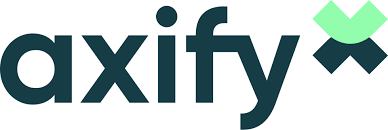
16. Axify
Axify pulls metrics from tools into one dashboard, spotlighting bottlenecks across projects or business lines. Real-time views track delivery pace, bug time, and inefficiencies, with integrations feeding data from CI/CD or ticketing. Blogs dive into AI trends like anomaly detection or predictive recovery, but the core shines in surfacing hidden drags on flow. Free trial lets users hook up stacks and poke dashboards right away.
Industry nods from finance to medtech highlight quick wins in culture shifts, where visibility sparks fixes without blame. Antoine’s quote captures the engaging twist—metrics that teach, not just report. It’s straightforward: connect, glance, act, and watch cycles tighten. Practitioners dig how it turns vague “slow” feelings into pinpointed tweaks.
Faits marquants
- Dashboards aggregate org-wide performance
- Bottleneck maps from tool integrations
- Free trial for instant metric pulls
- Guides on AI for monitoring and recovery
Who it’s best for
- Leads spotting drags in multi-project flows
- Orgs blending metrics from scattered tools
- Cultures chasing data over gut feels
Informations sur le contact
- Website: axify.io
- Phone: +1 (418) 476-2090
- Email: info@axify.io
- Address: 2327 Versant Nord blvd, suite 111, Quebec, Canada G1N 4C2
Conclusion
Wrapping up, these AI tools each tackle a different pain point in DevOps-whether it’s automating the grunt work, spotting issues before they blow up, or just giving clearer visibility into what’s actually slowing things down. Some lean hard into agentic workflows where the AI doesn’t just suggest but acts, while others focus on keeping humans in the loop with smart nudges and real-time feedback. What ties them together is a shift away from manual scripting toward systems that learn, adapt, and handle complexity on their own.
The real win? Less time wrestling with infrastructure or chasing bugs, more time building what matters. Pick the one that fits your workflo-maybe you need deep observability, maybe you’re drowning in compliance, or maybe you just want your pipeline to stop breaking at 2 a.m. Either way, AI isn’t replacing DevOps; it’s finally giving it the co-pilot it’s been asking for. Start small, test one, and watch the chaos shrink.


